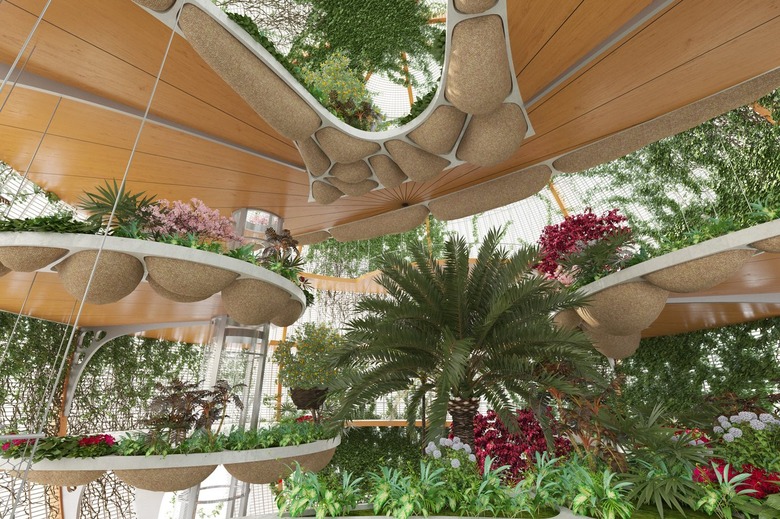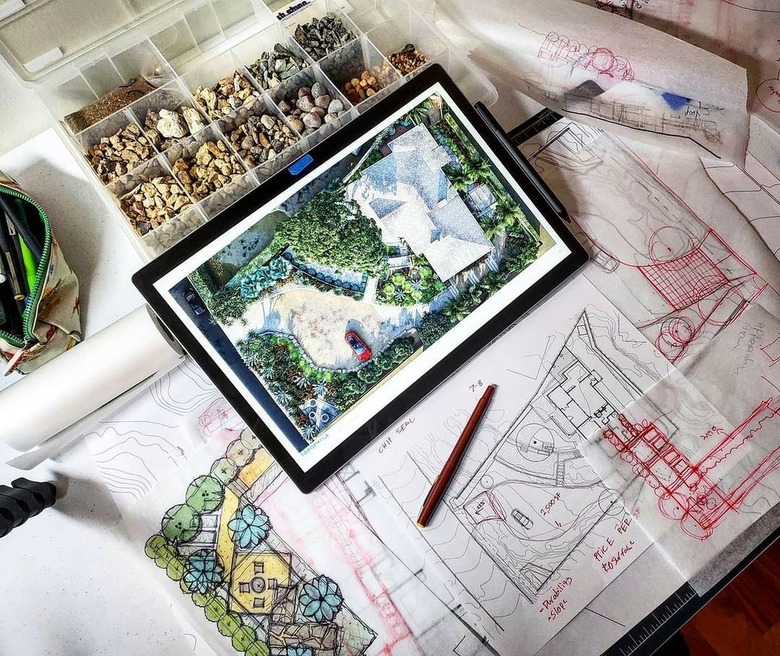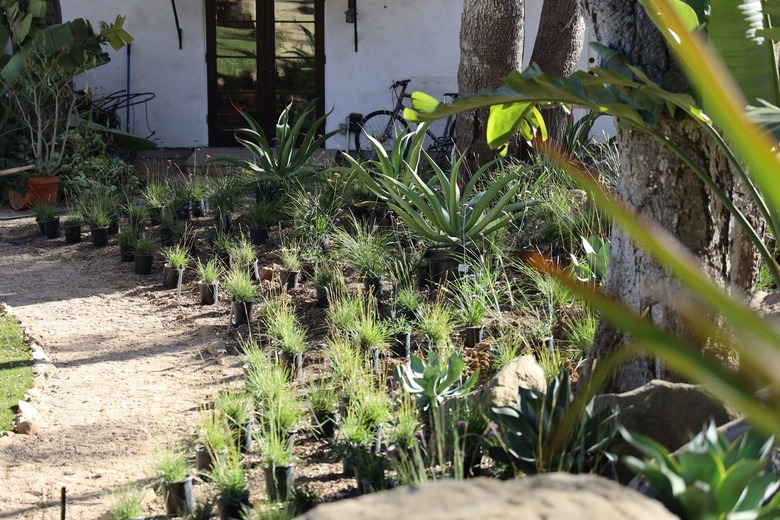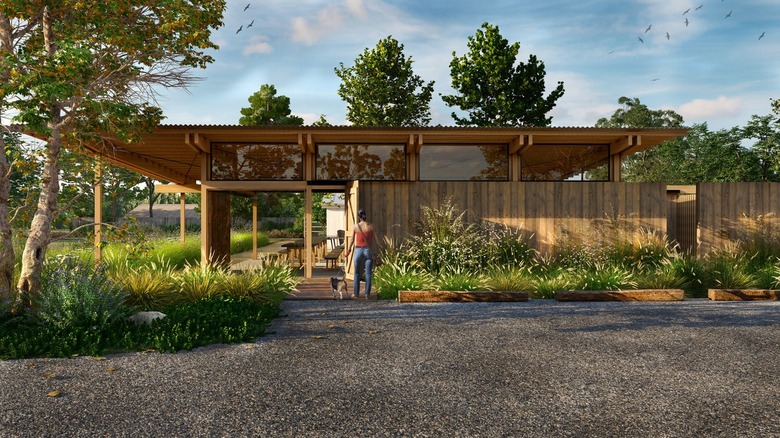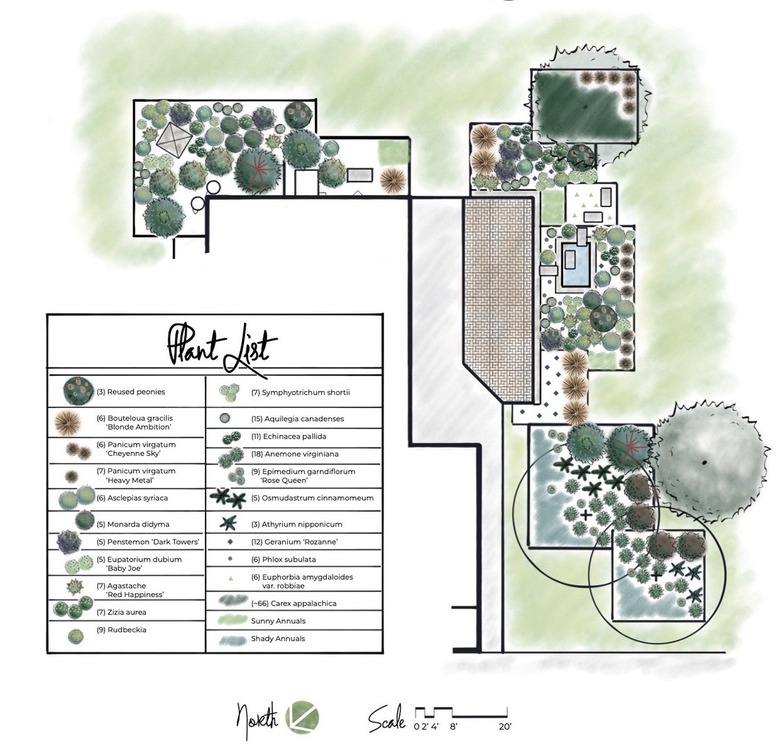What Does The Future Of Green Landscape Design Look Like?
The lawn is often seen as an extension of the home. It's a space to be decorated, much like an empty room. But what if we were to let go of this notion — and treated the lawn like an extension of nature instead?
For Eric Arneson and Nahal Sohbati, landscape designers and founders of Topophyla, this philosophy informs their vision for sustainable landscaping. It's an aspect of home design that has been rapidly growing, especially as homeowners and designers alike begin to understand the realities of our planet's future.
People are not only examining their connection with Mother Nature, but assessing it through their landscapes, too. Consider this anecdote from Bryan Quinn, an ecologist, and principal and founder of ON. Engineering and One Nature, an environmental planning and applied ecology company in the Hudson Valley region of New York: "When I first started [One Nature in 2005], I used a lot of scientific language and facts from the academic paradigm." It was a way of justifying choices that, while sustainable, departed from the standard concepts of landscape beauty. For example, when discussing sustainable lawn-to-meadow conversions, clients would be more receptive to the idea if Quinn could quantify the benefits for pollinators and connect that to regional ecological concerns.
But that was nearly two decades ago. Since then, homeowners have gradually adopted a more holistic approach to their landscapes — one that allows them to work with nature, rather than in spite of it. What's more, these days, "people want their landscapes to care for them on a spiritual level," shares Quinn.
So, why the new mindset? Quinn tells Hunker, "More people [now] understand that Western science, while relevant, only tells part of the story." Folks are also starting to feel the damage of the past century's extreme materialism: climate anxiety, nature-deficit disorder (the idea that spending less time outside can lead to behavioral issues), and general spiritual emptiness. As a result, there's more awareness regarding the intangible elements that gardens, and plants in general, can bring into our lives, Quinn says.
"Sustainable landscape design is a strategy to optimize the ecological and social benefits of a space." — Arneson and Sohbati
Ana Maria Torres, landscape designer and founder of New York-based at architects, echoes these sentiments, attributing the increasing interest in green landscaping to our realization that we can (and do) impact our environment. "We are finally learning that we don't have any excuse; we all have a responsibility," Torres tells Hunker.
Of course, as with many forms of sustainability, green landscaping is a complex and multi-layered practice. But at its core, "sustainable landscape design is a strategy to optimize the ecological and social benefits of a space," explains Arneson and Sohbati. At the same time, this type of landscaping aims to minimize the negative impacts from construction, maintenance, and material choices. In short, "the purpose of sustainable landscape design is to create a long-lasting healthy and productive habitat for people, plants, and other living occupants," Arneson and Sohbati tell Hunker.
Image description: Landscape plans. Credit: Eric Arneson/Topophyla
That said, perhaps the biggest change currently happening is the increasing emphasis on native plants. As Arneson and Sohbati note, "Landscape designers in the past typically used exotic plants that were readily available in the nursery trade." This is an issue because many of these species are considered invasive, "which means they can escape your garden [and enter] the wild, where they outcompete and displace native plants," Angela den Hoed — landscape designer, garden coach, and founder of Soil and Ink Landscape Design — tells Hunker. This can be just as devastating for local wildlife — as animals are accustomed to eating certain plants — and can even push some native species to extinction, adds Arneson and Sohbati.
Fortunately, this is gradually improving. It used to be difficult to find plant nurseries that offer a diverse range of native species, says Quinn. But now, there are many nurseries — such as the One Nature nursery, which Quinn founded — that specialize in these critical plants. Moreover, "many states are beginning to ban the sale of [non-native] plants," says den Hoed. While it takes time to enact these laws, it's certainly a start.
Image description: Native plants in pots prior to being planted in the landscape. Credit: Eric Arneson/Topophyla
Invasive plants aren't the only features disappearing from landscapes. According to Arneson and Sohbati, lawns are slowly being replaced, and they couldn't be happier about it. "Lawns have become entrenched in our society and account for roughly 2% of the surface area in the United States, making it our number-one 'crop,'" they say. However, lawns are not sustainable "because of the massive amounts of water and maintenance that goes into keeping them lush and green," according to Arneson and Sohbati. Den Hoed agrees, dubbing the lawn "the biggest resource hog of all." Additionally, lawns provide little to no habitat for wildlife — and no value for the local ecosystem.
As the industry moves away from invasive plants and water-chugging lawns, another aspect of landscaping will also change: maintenance. After all, when native plants are specifically chosen for existing site conditions (think: light, moisture, soil), they likely won't need water or fertilizer once they're established, den Hoed explains. Meanwhile, reducing the lawn to the amount actually needed for kids or pets to play will significantly cut down on the time and money spent on maintenance, she explains.
Den Hoed goes on to add that while this approach to landscape design "is new to the average homeowner, [it's] gradually working its way into the market." What's more, den Hoed believes that the transition to more ecological landscapes will pick up steam as sustainable plantings are established in residential areas. "I find that newer homeowners are much more in tune with the need for sustainability and more willing to reach out to a local expert for advice," she says.
Image description: A landscape rendering depicting a person walking their dog toward a home surrounded by lush native plants. Credit: Eric Arneson/Topophyla
Despite these positive changes, there's still work to be done. The evolution of green landscaping has brought certain harsh realities to light, many of which aren't on most people's radar. "I see a lot of developers and homeowners use 'sustainability' as justification to ignore social inequities," observes Quinn, who has been in the business for more than two decades. "Environmentalists have [long] been complacent about social issues, and often [consider them to be] unrelated to sustainability," he states.
"I see a lot of developers and homeowners use 'sustainability' as justification to ignore social inequities." — Quinn
But as Quinn points out, this social inequality stunts our ability to work collectively, which is critical to the sustainability of our biosphere. "We have to find a better way to bring good landscape design to the other 90% of the population," he adds. Undoubtedly, discovering such ways is a work-in-progress, one that will need to continuously evolve.
For those that do have the means, "planning a green landscape on a personal scale will have a long-term impact on the overall environment," says Torres. This is especially true if both homeowners and designers consciously approach their gardens as a continuation of nature, rather than a piece of property to be adorned.
One thing is for sure: The future of sustainable landscape design will rely on a shift in perspective. This includes not only how we perceive our role in nature, but how we perceive its beauty, too. "Our biggest hope for the future is to redefine what a 'beautiful' garden is," says Arneson and Sohbati. A beautiful garden is not static, they say — and it doesn't look the same year-round. Instead, it has a life cycle and seasonal changes, just like natural spaces should.
Image description: A perennial planting plan. Credit: Soil and Ink
Quinn's hopes are exceptionally similar, proving how perception is at the heart of green landscaping. "In the short term, I'm trying to influence people's conceptions of 'beautiful', so that a wilder, more natural landscape aesthetic becomes the standard," shares Quinn. "I think society needs this perspective shift. But to make that kind of evolution, we have to let go of some control, let plants and animals flourish — and listen."
Main image description: A commercial bird garden. Credit: at architects
